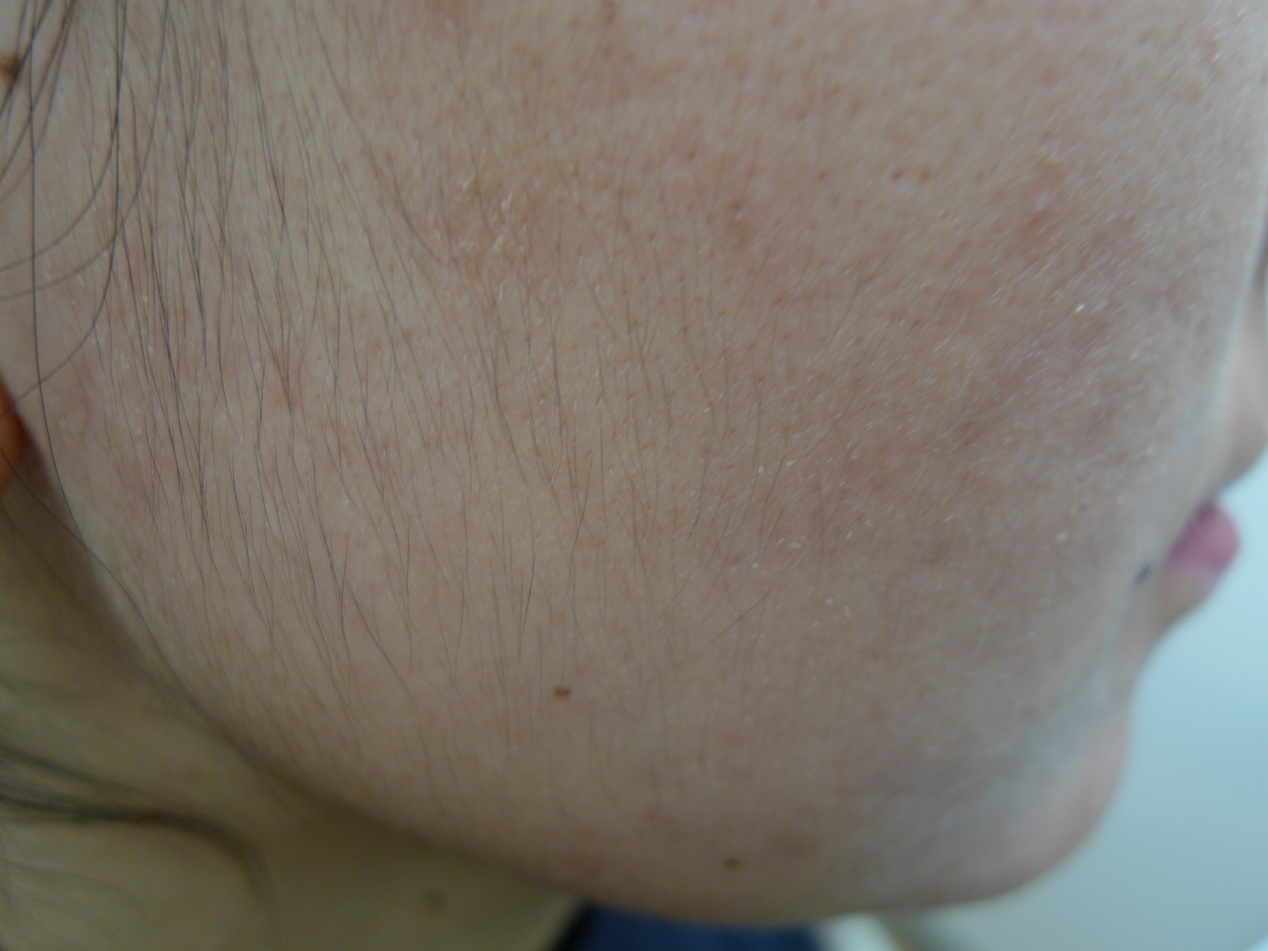Also known as … Excessive hair growth
The term hirsutism refers to excessive hair production in both males and females. However, medically it is used to define increased hair growth in women. Hirsutism affects 5-10% of women.
Most cases of hirsutism are of unknown or genetic origin. It may also occur because of an underlying condition. Hirsutism can be an emotionally significant problem. However, effective treatments are readily available.
The underlying mechanism in hirsutism is an increased sensitivity of the hair follicle to male hormones known as androgens. An enzyme known as 5-alpha-reductase may also be a major contributing factor. As a result, terminal hairs (coarse, pigmented hairs which grow under the influence of androgenic hormones) grow more quickly and become darker and thicker.
There may be a family history of hirsutism. The cause may be genetic or the result of an underlying condition.

Hirsutism of unknown or genetic origin usually begins at puberty. Hirsutism due to an underlying condition usually has a later onset.
Hirsutism refers to the growth of coarse terminal hairs and not the soft fine lightly pigmented vellus hairs. The most commonly affected areas include terminal hairs on the upper lip, outer cheeks, chin and jawline, chest, legs and thighs, forearms, upper and lower back areas and abdominal areas.
Hirsutism has been associated with the following conditions and/or drugs:
- Polycystic ovarian syndrome (PCOS). This is the most common underlying cause of hirsutism
- Congenital adrenal hyperplasia
- Cushing syndrome
- Tumours (such as adrenal, ovarian, lipoid, pituitary gland tumours and gonadoblastomas) are very rare causes of hirsutism
- Endocrine disorders (such as thyroid disease)
- Drugs (such as testosterone and anabolic steroids)
The doctor will determine the need for further testing based upon the person’s medical history and a physical examination. Blood tests and imaging may be needed to exclude an underlying condition. This may include testing for the following:
- total and free testosterone levels
- dehydroepiandrosterone sulfate levels
- dexamethasone suppression
- ACTH stimulation
- cortisol suppression
- prolactin levels
- thyroid function including thyroid stimulating hormone and thyroxine levels
If PCOSis suspected, tests may include:
- luteinizing hormone and follicle stimulating hormone levels
- free androgen levels (total and free testosterone)
- glucose, insulin and lipid levels (for secondary conditions associated with PCOS)
- imaging including pelvic ultrasound
- pelvic examination by a gynaecologist
Referral to an endocrinologist may be necessary.
There are both medical and physical treatments for hirsutism.
Medical treatments for hirsutism include:
- Oral contraceptive pill (OCP)
Several OCPs on the market contain anti-androgens including cyproterone acetate and drospirenone.
- Spironolactone (dose range 50-200mg daily)
This medication acts by blocking androgen receptors and can be combined with the OCP. Side effects include menstrual irregularities, breast tenderness, and mood swings. Spironolactone may elevate potassium levels and regular monitoring with blood tests is advisable.
- Cyporterone acetate
This medication can be effective in the treatment of hirsutism, either as a stand-alone treatment or combined with the OCP or spironolactone.
- Finasteride
This medicationblocks dihydrotesteron and is also used to treat male pattern baldness. Finasteride should not be taken during pregnancy due to the risk of genital malformations in male foetuses.
- Metformin
This medication can be effective in cases of PCOS. Monitoring of blood sugars is mandatory.
- Flutamide is a non-steroidal antiandrogen. Specialist supervision is recommended as hepatitis is a possible side effect.
- Creams – eflornithine hydrochloride
This topical treatment is approved by the Therapeutic Goods Administration for use in Australia. Eflornithine works by inhibiting the production of an enzyme necessary for hair growth in the hair follicle. This slows the rate of hair growth. Treatment will need to continue for life.
Physical methods of treatment include:
- Laser and light devices
This is the most effective method of hair removal or permanent hair reduction. The wavelength of laser-light method will depend on the skin type. People with darker skin type can be safely treated with long pulse 1064 nm Nd Yag lasers. People with lighter skin can be treated with 755 Alexandrite lasers or intense pulse light (IPL). To achieve an 80-90% reduction in hair growth, multiple treatments are needed. Laser and light treatments can only treat dark hair and not white or pale hairs.
In people with an underlying hormonal condition such as PCOS, top up sessions are usually required yearly to prevent recurrence.
- Electrolysis can be an excellent method for treating both dark and white hairs.
- Waxing can treat all hair colours and can be repeated as needed.
- Shaving is a simple, cost effective method of managing hirsutism. Contrary to popular belief, this does not cause “rebound” hair growth.
- Plucking is effective.
- Bleaching with hydrogen peroxide is a form of camouflage, making excessive dark hairs less obvious.
- Depilatory creams.
This depends on the cause. If an underlying cause is identified and treated, hirsutism may resolve.
Some cases which are genetic in nature will improve after menopause. However, the majority will persist life-long.
Laser hair reduction is the most promising treatment for dark hairs. If conducted correctly, hair reduction can be permanent. In cases where a hormonal imbalance is present, “top up” treatments once to twice a year may be needed. Choosing the correct laser wavelength is paramount for safety and efficacy, especially in darker skin types. Consulting an experienced laser practitioner is important.
This information has been written by Dr Davin S. Lim
Disclaimer
2019 © Australasian College of Dermatologists.
You may use for personal use only. Please refer to our disclaimer.